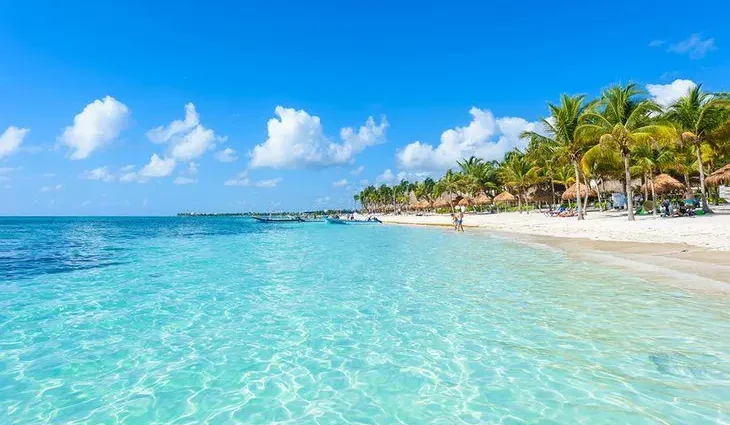Contents
- 1. Bask on Mexico’s Caribbean Beaches
- 2. Experience the World of Xcaret
- 3. Dive or Snorkel Cozumel’s Teeming Waters
- 4. Surf the Pacific Coast
- 5. Tap Your Spiritual Side
- 6. Take a Boat Trip to El Arco de Cabo San Lucas
- 7. Explore Mexico’s Cenotes
- 8. Visit the Seaside Ruins at Tulum
- 9. Tour Mexico’s Best Archaeological Sites
- 10. Soak Up Colorful History in San Miguel de Allende
- 11. Learn about Frida Kahlo
- 12. Wander through Mexico City’s Centro Historico
- 13. See the Copper Canyon by Train
- 14. Go Eco-Friendly in Bacalar
- 15. Visit the National Museum of Anthropology
- 16. Stroll Puerto Vallarta’s Zona Romántica
- 17. Discover the City of Oaxaca
- 18. Hop the Caribbean Islands
- 19. Stroll Merida’s Paseo de Montejo
- 20. See the Cliff Divers in Acapulco
- 21. Explore the Longest Malecon in Mexico
- 22. Dive into Rio Secreto
- 23. Visit the “Other” Side of Los Cabos
- 24. Marvel at the Waterfalls of Tamul
- 25. Get Mystical in San Cristobal de las Casas
From palm-fringed beaches to plunging canyons, historic cathedrals, and mural-splashed city streets, Mexico is one of the most dynamic countries in the world.
But it doesn’t stop there. Mexico has thousands of years of history, epic landscapes, towering mountains, ancient ruins, world-class cuisine, and 5,800 miles of coastline that create an endless list of things to do for travelers. From laid-back beach towns to cosmopolitan culture and historic colonial towns, Mexico really is a paradise for every type of visitor.
But where to begin? It would be impossible to capture the best of Mexico all in one shot. But there are certainly top tourist attractions and places to visit in the country that are iconic to understanding the destination.
If you’re ready to dive into one of the most impressive countries in the world, read our list of the top things to do in Mexico.
1. Bask on Mexico’s Caribbean Beaches

Mexico has more than 5,800 miles of coastline, but none of its beaches are more impressive than the Caribbean coast. Along the Yucatan Peninsula, from Cancun down to the border of Belize, are some of the most stunning beaches in the world.
Cancun’s beaches are lined with world-class hotels and resorts, with miles of expansive sugar-colored sand and shockingly blue water. Farther south, travelers will discover the energy of Playa del Carmen, a thriving city on the sea.
Past Playa del Carmen, discover the once-rugged town of Tulum, which has grown to be a top luxury getaway, with A-list hotels, restaurants, and boutique shopping, all along a beautiful stretch of bleached sand.
Even farther south, travelers will discover undeveloped, remote beaches along the Sian Ka’an Biosphere Reserve, the tiny beachfront community of Mahahual, and the remote beaches that lead the way down to Belize.
Accommodation: Best Beach Resorts in Mexico
- Read More: Top-Rated Beaches in Mexico
2. Experience the World of Xcaret
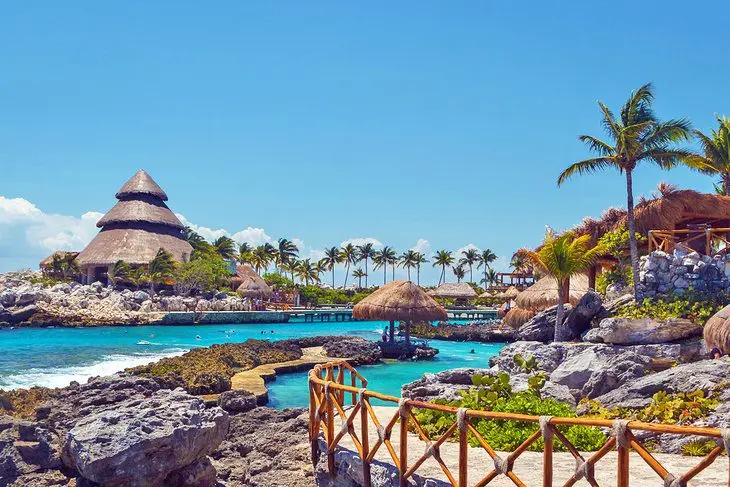
Thousands of visitors from all over the world flock each year to Mexico’s most popular theme park, Xcaret. This ultimate cultural experience is part of Grupo Experiences, one of the largest, most beloved companies in Mexico offering regional entertainment.
Xcaret, their most popular, is dedicated to Mayan heritage and culture, which is indigenous to this part of Mexico. The park has more than 50 natural and cultural tourist attractions, including a jungle, beach, and underground rivers.
Learn about ancient Mayan customs through live performances, or immerse yourself in the natural environment, like the coral reef aquarium.
Grupo Experiencias has other theme parks as well, which include ziplines and lazy rivers, water parks, cultural shows, and more.
Address: Carretera Chetúmal Puerto Juárez Kilómetro 282, Solidaridad, 77710 Playa del Carmen, Q.R., Mexico
Official site: https://www.xcaret.com/en/
3. Dive or Snorkel Cozumel’s Teeming Waters
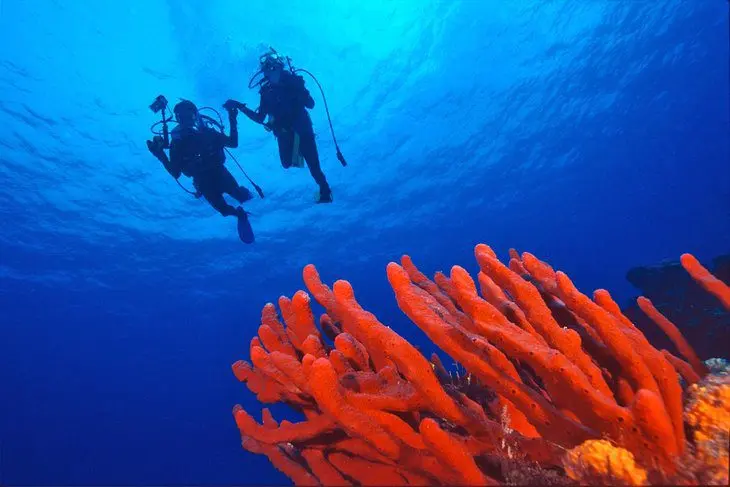
One of Mexico’s largest islands (and by far its most famous), Cozumel is a must-see attraction in Mexico. The Caribbean island sits just off the coast of Playa del Carmen and is one of the biggest cruise ports in the country.
It’s known for its sugary, powder-soft sand; crystal-clear, turquoise water; and, most notably, for its diving and fishing, which is among the very best in the world.
The warm waters around Cozumel are teeming with sea life. The destination is legendary among divers for this reef system, which is a part of the Mesoamerican reef system, second in the world in size to Australia’s Great Barrier Reef. The reef is protected by the Cozumel Reefs National Marine Park and is home to more than 26 coral species and more than 500 species of fish.
If you’d rather frolic with fish above the water, summer is the best time of year for fishing in Cozumel. Sailfish, marlin, mahi-mahi, and tuna flock to the warmer waters. Within a couple of minutes of the marina, the shoreline plummets about two miles deep, making it a prime gathering point for big game fish.
The island is popular for cruisers and day-trippers but has plenty of hotels, resorts, restaurants, and tourist attractions to offer its own type of vacation. There’s even an international airport on the island.
Only half of Cozumel is open to visitors, while the other half is protected as a natural preserve. The western coast has the most popular beaches and hotels, while the eastern Caribbean-facing side has wilder, untamed beaches and more off-the-beaten-path hideaways.
Accommodation: Best All-Inclusive Resorts in Cozumel
4. Surf the Pacific Coast
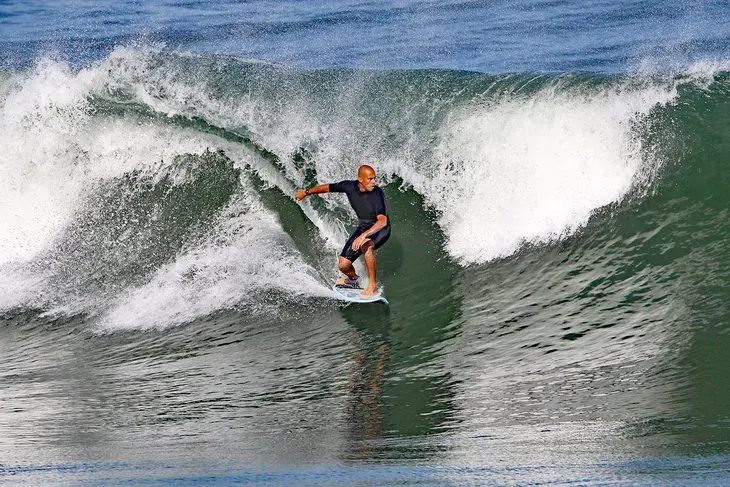
From the Baja Peninsula all the way down to the beaches of southern Oaxaca, Mexico’s Pacific Coast is a veritable aquatic playground for surfers of all levels. From big name surf competitions to secret coves with gentle lapping waves, everyone from the international pros to the extreme beginners will be able to catch a perfect wave along Mexico’s Pacific Coast.
The Baja Peninsula has been a favorite surf spot for world travelers chasing that endless summer for decades. Spots like Ensenada and Todos Santos are legendary. But it is far from over at the end of the peninsula.
Mazatlan in the state of Sinaloa, Punta Mita along the coast of Nayarit, Troncones in Guerrero, and the area around Puerto Escondido in Oaxaca are other A-list Mexican surf breaks worth diving into. In fact, just off the coast of Puerto Escondido is the world-famous Mexican Pipeline, which is one of the top places to surf on the planet.
5. Tap Your Spiritual Side
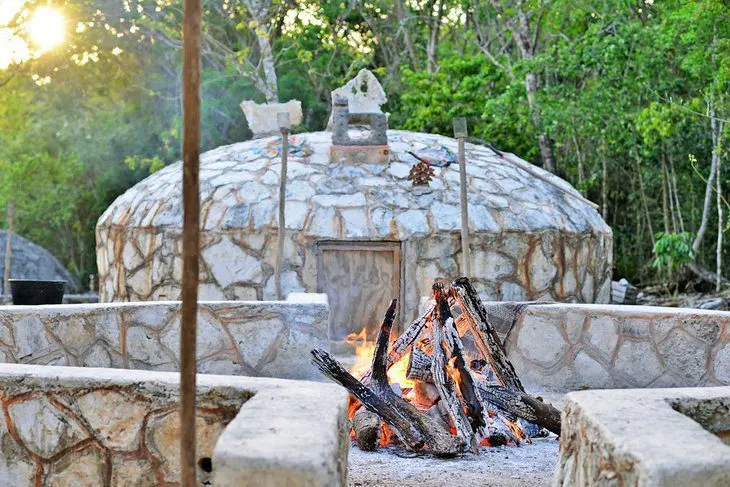
Mexico may be a predominantly Catholic country, but its spirituality is rooted in ancient practices. A deep history of shamanism is prevalent in many different indigenous groups across Mexico, from the Mayans of the Yucatan Peninsula to the Huichol in the central Northwest in the Sierra Madre Occidental Mountains.
Today, many travelers flock to Mexico for spiritual healing. San Cristobal de las Casas, for example, is a mountain town in the southern state of Chiapas known for its mysticism. Here shamanism is alive and well among the Tzotzil people, an indigenous Maya people who occupy the highlands. Visitors come from all over the world for workshops in meditation and yoga.
One of the most popular healing rituals in Mexico is the temazcal ceremony. The ceremony involves a sweat lodge, combined with a sacred ritual, that leaves participants feeling cleansed – emotionally, physically, and mentally. The 1,000-year-old ceremony includes a spiritual guide, who takes participants on a healing journey within the sweat lodge, combined with songs, chanting, and prayer. Those who participate in temazcal have reported clearer skin, increased blood flow, and relief of stress.
6. Take a Boat Trip to El Arco de Cabo San Lucas

Marking the point where the Gulf of California meets the Pacific Ocean, El Arco de Cabo San Lucas is the most recognizable landmark on the Baja Peninsula.
The naturally formed stone archway is one of the most photographed spots in the world, and a must-see when vacationing in Mexico’s luxury capital, Cabo San Lucas. On one side of the arch is the Playa del Amor (Lover’s Beach), while the other side of the arch is home to Playa del Divorcio (Divorce Beach).
What’s cool about the arch is that it is only accessible by boat. You can visit the arch a few different ways, whether on a private boat charter, tour, or via a water taxi that can be arranged in the Cabo San Lucas Marina.
Accommodation: Top-Rated Beach Resorts in Cabo San Lucas
- Read More: Top-Rated Things to Do in Cabo San Lucas, Mexico
7. Explore Mexico’s Cenotes
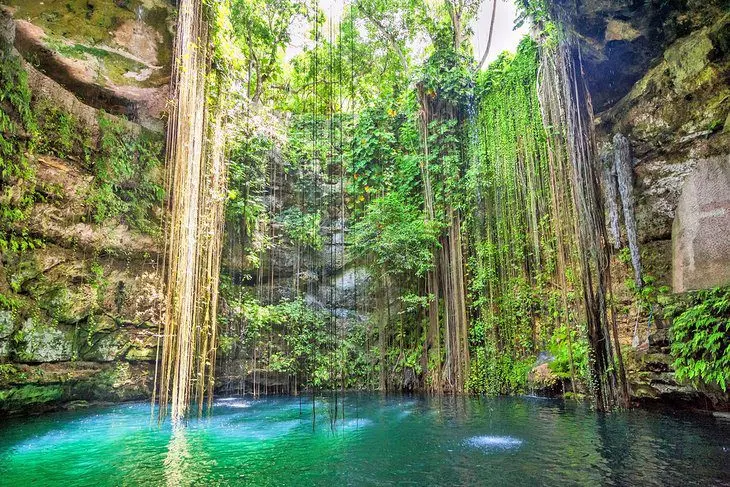
All across the Yucatan Peninsula, just a stone’s throw from the majority of the area’s popular vacation spots, are approximately 20,000 cenotes. Cenotes are underground caverns connected by a series of rivers that vein the entire peninsula, from the coast to deep into the jungle.
The Mayans believed that cenotes were entrances to the underworld, and as such have held cultural importance for hundreds of years. Today, cenotes are integral pieces in understanding Mexico’s cultural and topographical history. For tourists, they provide a fascinating way to spend the day understanding the Yucatan’s natural environment.
Picture thousands of stalagmites and stalactites, translucent fresh water, and miles of tunnels connecting this mythical, prehistoric underground masterpiece.
Many people take tours from Cancun and Playa del Carmen to see and experience cenotes.
8. Visit the Seaside Ruins at Tulum
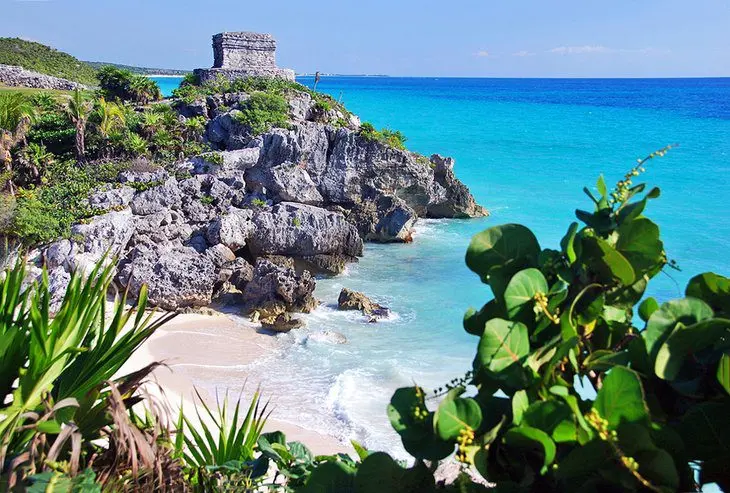
Tulum splashed onto the luxury scene a few years ago, but before that, it was very much a backpacker’s paradise, complete with eco-friendly bungalows, cheap eats, and a sparkling beach.
Today, Tulum is very much five-star boho chic, with luxury boutique hotels, A-list cuisine, and high-end shopping. The town still manages to retain a laid-back vibe, but it comes at a premium price tag.
But more than a playground for the posh, Tulum is home to some of Mexico’s most iconic ruins. The ruins at Tulum tell the story of an ancient Mayan port, perched high on the cliffs overlooking the pristine beach below.
A trip to the archaeological site is definitely worth a visit, if only to grab the iconic shot of the watch tower against the backdrop of the electric blue sea.
9. Tour Mexico’s Best Archaeological Sites
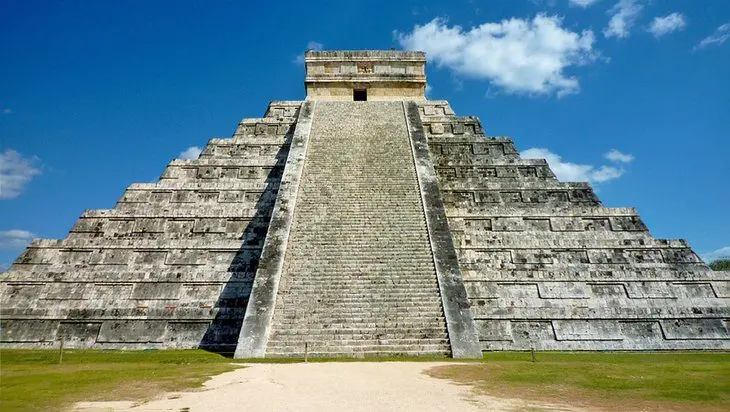
Speaking of Tulum’s ruins, Mexico is a veritable treasure trove of archaeological sites. The country has been home to dozens of indigenous tribes, far beyond the Mayans and the Aztecs. Some of the other indigenous groups include the Zapotecs, Olmecs, Toltecs, and Huichols, just to name a few.
As a result, the country is packed with literally hundreds of ruins all across the country. Some are well-known, like the Mayan city of Chichen Itza, which is one of the New Seven Wonders of the World.
There is also Teotihuacan, the ancient Aztec city just outside Mexico City. But other sites include Monte Alban, a Zapotec site near the city of Oaxaca, and Palenque, which is a jungle-shrouded Mayan city in the state of Chiapas. Other sites to know are Calakmul in Campeche, Uxmal in Yucatan, and Guachimontones in Jalisco.
10. Soak Up Colorful History in San Miguel de Allende
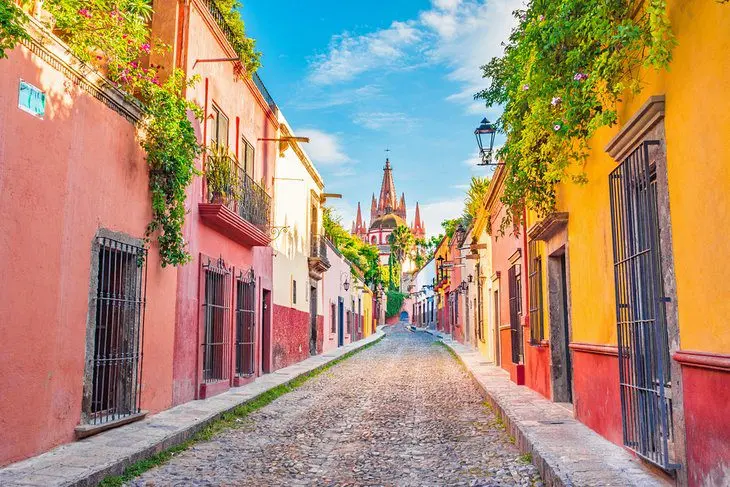
When it comes to colonial cities in Mexico, none is as magical or visually stunning as San Miguel de Allende. Just three hours outside Mexico City is this spectacular jewel, which was named a UNESCO World Heritage Site in 2008. The city was the first Spanish settlement in the state of Guanajuato, founded in 1542.
What makes San Miguel de Allende so special is its artistic spirit. For decades, it has lured travelers from all over the world to experience its local art scene, colorful architecture, cobblestone streets, and glorious mountain views.
San Miguel de Allende always acted as a cultural melting pot, as it was part of the Spanish Royal Route to the interior of Mexico. Many of its iconic Mexican Baroque buildings were constructed in the 18th century. Today, it is considered a UNESCO World Heritage Site because of its Outstanding Universal Value.
The city has evolved to become one of the top luxury getaways in the country, with five-star boutique hotels, spas, restaurants, and art-forward events.
Accommodation: Where to Stay in San Miguel de Allende
- Read More: Top Attractions & Things to Do in San Miguel de Allende
11. Learn about Frida Kahlo
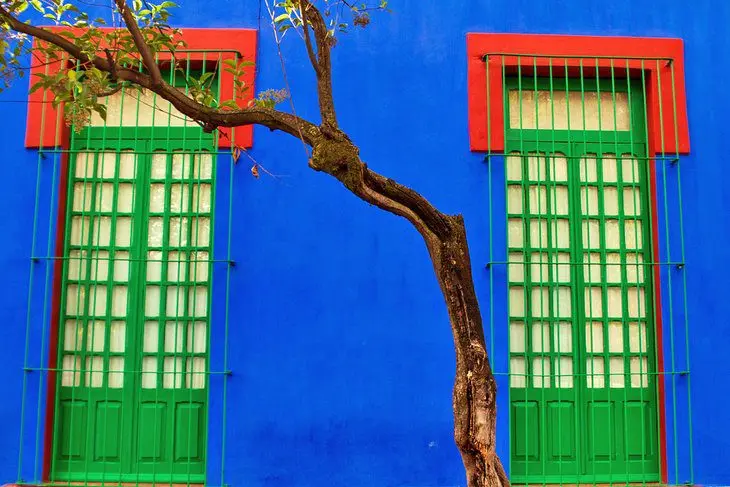
One of the most iconic faces of Mexico is that of Frida Kahlo. An icon of Mexican art, culture, and feminism, her influence on Mexico is undeniable. The best way to learn about this incredible woman is to visit her former home in Mexico City, Casa Azul, which has been turned into a museum dedicated to her life and work.
Located in the suburb of Coyoacan, Casa Azul is where Kahlo spent the majority of her time. It is where she was born, and eventually it was where she died. It showcases personal objects that help tell her story, as well as some of her most important pieces of art.
It’s one of Mexico’s most important museums and helps visitors understand so much more about the depth and layers of Mexico and its people.
Address: Londres 247, Del Carmen, Coyoacán, 04100 Ciudad de México, CDMX, Mexico
Official site: https://www.museofridakahlo.org.mx/
12. Wander through Mexico City’s Centro Historico
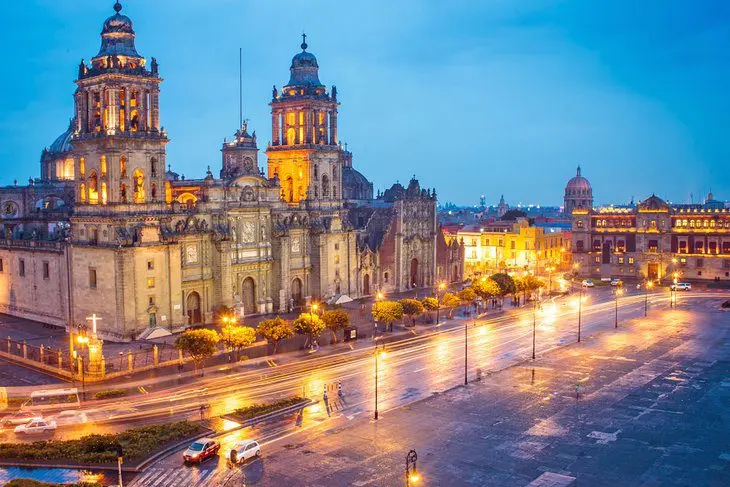
Mexico City is defined by its dozens of diverse, cultural, and colorful neighborhoods. But for first-timers to Mexico City, the most important stop is the Centro Historico. This gives a perfect snapshot of the country’s capital over the past several centuries.
Mexico City sits on the former Aztec capital, Tenochtitlan, which the Aztecs founded in the 14th century. Remnants of the original capital can be found in the Centro Historico at the archaeological site of Templo Mayor.
The Templo sits elbow to elbow with magnificent works of Spanish architecture, leftover from the Spanish conquest in the 16th century. The best examples are in the Zocalo, or the main plaza, specifically the Palacio Nacional and the Metropolitan Cathedral. Within the Palacio Nacional are some of the most beautiful murals by Mexican artist Diego Rivera (who was married to Frida Kahlo).
You’ll also find the Palacio de Bellas Artes in the Centro Historico. The gorgeous domed building is a cultural center that hosts music, dance, theater, and opera performances.
- Read More: Top-Rated Tourist Attractions in Mexico City
13. See the Copper Canyon by Train
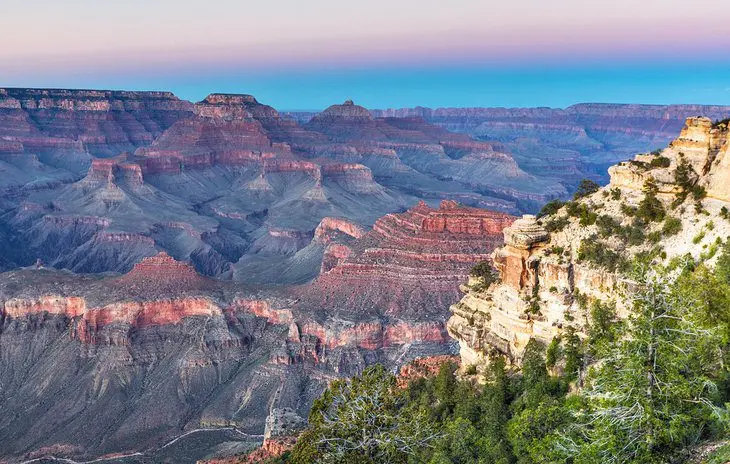
Most people are surprised to learn that Mexico has its own Grand Canyon. In fact, it’s even bigger than the one in the United States. Copper Canyon, or Barrancas del Cobre, is a massive canyon in the northern state of Chihuahua, which spans more than 25,000 square miles and is made up of six canyons in the Sierra Madre Occidental.
The canyon is named for its reddish hue, and is one of the most naturally stunning places in the country.
One of the best ways to see the canyon in its entirety is to ride the Chihuahua al Pacifico train, or “El Chepe.” The train route runs from Chihuahua to Los Mochis in Sinaloa, which isn’t far from the beach town of Mazatlan. A perfect vacation combo is to start with the mountains and end at the beach.
14. Go Eco-Friendly in Bacalar
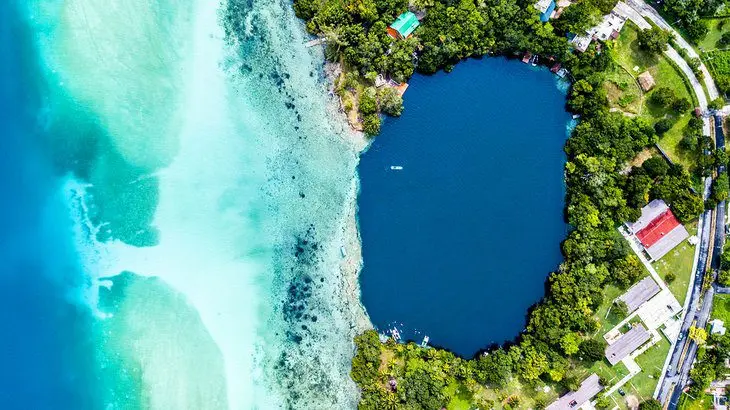
For many travelers in the state of Quintana Roo, the vacation ends in Tulum. But if you keep driving just a few hours more, you’ll be rewarded with one of the most spectacular places in all of Mexico: Laguna de Bacalar.
Laguna de Bacalar is Mexico’s second largest lake and goes by the nickname, “The Lake of Seven Colors.” The jewel-colored lake is as expansive and crystal clear as the Caribbean Sea, dotted with small eco-resorts and pebbly beaches perfect for exploring.
The locals of Bacalar are big proponents of sustainable energy and responsible tourism. Non-motorized sports are much preferred over motorboats on the lake. As such, you’ll see dozens of kayaks, sailboats, and stand up paddleboards.
Then there are the eco-hotels, like Mia Bacalar with its own organic waste treatment; water filtration system; and a chef’s orchard, which supplies many ingredients for the restaurant’s menu.
A small town of the same name sits on the shore, with a few historic sites of interest for sightseeing, like an old Spanish fort, and several Mayan ruins nearby.
The lake stretches nearly 40 miles from end to end and is one of the more under-the-radar destinations in Mexico. But, it’s only a matter of time before international tourists find it.
15. Visit the National Museum of Anthropology
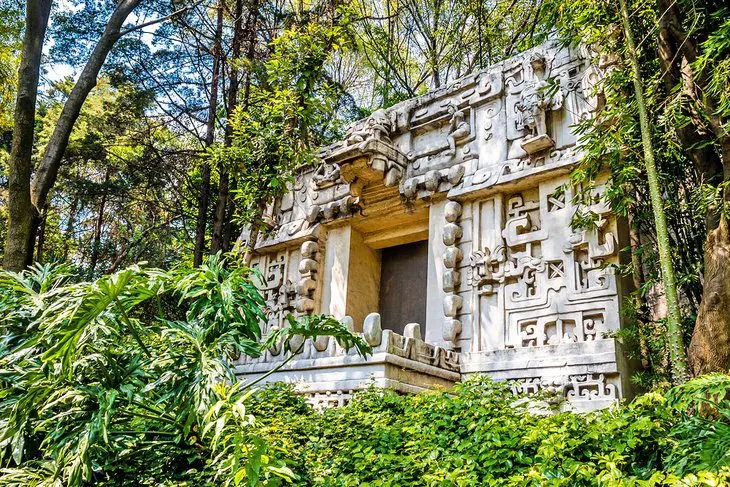
Meet what is perhaps the most beloved museum in the entire country of Mexico. Located in Mexico City’s Chapultepec Park, the National Museum of Anthropology is a must-see attraction for anyone visiting the capital city. The national museum is the largest in the country and has the most comprehensive collection of archaeological and anthropological artifacts from Mexico’s pre-Columbian people.
The most iconic artifact in the museum is the Stone of the Sun, which is the Aztec calendar stone. But within the museum, you’ll also find statues, murals, turquoise-decorated artifacts, and even the massive stone head carvings from the Olmec peoples.
Mexico’s Indigenous peoples extend far beyond the Aztecs and the Maya. You will have the opportunity to learn about the Zapotecs, Mixtecs, Huichols, and many other groups that helped to create the traditions of modern-day Mexico.
The building itself is a work of art, as well. The building has 23 rooms, including outdoor exhibits with gardens. The courtyard of the building has a massive pond, to boot.
Address: Av. Paseo de la Reforma s/n, Polanco, Bosque de Chapultepec I Secc, Miguel Hidalgo, 11560 Ciudad de México, CDMX
Official site: https://www.mna.inah.gob.mx/
16. Stroll Puerto Vallarta’s Zona Romántica

The heart and soul of Puerto Vallarta can be found downtown in what is known as the “Zona Romantica.” The oldest part of the city, the Zona Romantica is known for its cobblestone streets, winding alleyways, whitewashed buildings, and red-tiled roofs. It also happens to be the most energetic part of the city – and the most beautiful.
One of the biggest draws to the Zona Romantica is the Los Muertos Beach, one of the best beaches in Puerto Vallarta. You’ll recognize it from its iconic flag-shaped pier, where water taxis dock to take travelers and locals to the beaches that are farther south in the bay.
The best restaurants are found in the Zona Romantica, as well as the charming boutique hotels, galleries, and markets. Visitors can also wander the Malecón (boardwalk) in the Zona Romantica to see the lively entertainment that is always on display.
No time is more beautiful in Puerto Vallarta than at sunset, and the Zona Romantica is the best place to catch the natural show. Hunker down at one of the beach restaurants on the sand, or simply pause on a historic street to watch as the entire city is bathed in beautiful gold.
17. Discover the City of Oaxaca
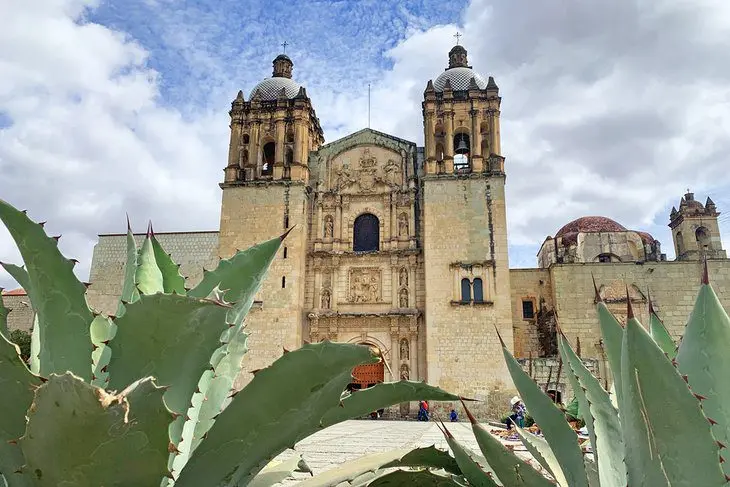
Few cities encapsulate the spirit of Mexico quite like Oaxaca. The capital city of the state by the same name, Oaxaca is a spectacular example of Mexican traditions mixed with Spanish colonial style. From the breathtaking churches and cathedrals to the brilliant colors of the city, the fabulous food, and the ancient ruins, Oaxaca has a little bit of something for everyone.
The most vibrant part of the city is undoubtedly its Centro Historico, home to the oldest architecture and traditional low-rise, multi-colored buildings that have become synonymous with Mexican colonial cities. This part of the city is where you’ll find the two most important churches, as well as the many beautiful boutique hotels, restaurants, galleries, and shops.
A quick 10-minute trip outside the city takes travelers to Monte Alban, an important archaeological site that once belonged to the Indigenous tribes of this region. You can also take a day trip from Oaxaca to visit Hierve El Agua, a petrified rock formation with natural mineral pools that overlook the valleys and mountains in the distance.
Of course, no trip to Oaxaca is complete without all the food. Mole is one of the most traditional dishes you can get in Oaxaca. It is a complicated, ancient recipe made of dozens of ingredients that come together in a rich and decadent sauce.
Read More: Best Beaches in Oaxaca
18. Hop the Caribbean Islands
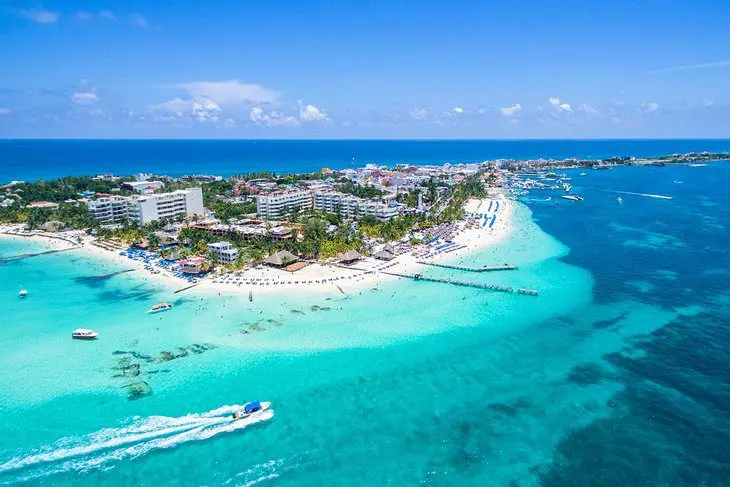
The Mexican Caribbean is so much more than just the coast of Cancun and Riviera Maya. Mexico has a few Caribbean islands to call its own, as well – and all of them are worth your time.
The most famous is likely one you’ve already heard of: Cozumel. Cozumel is Mexico’s most popular island, home to an important cruise port, all-inclusive resorts, beach hangouts, walking paths, and a humming downtown. It’s an easy hop over to Cozumel from Playa del Carmen. The ferry docks just off 5th Avenue in Playa’s busy downtown district. A ferry ride is roughly 30 minutes.
North, off the coast of Cancun, you will find the island of Isla Mujeres. This long, skinny island is easily visible from the Hotel Zone and the Costa Mujeres north of the airport. Over on the island life runs slowly. Visitors often rent golf carts, which they use as transportation to get across the island.

The northern end of the island is the busiest, with the most hotels, restaurants, and beach hangouts. It’s also home to Playa Norte, one of the most beautiful beaches in Mexico. The southern tip of the island is far more tranquil, with only a handful of hotels and not much activity.
Just off the coast of Isla Mujeres is Isla County. This protected natural habitat does not have any hotels and only permits a limited number of visitors a day in order to preserve the natural environment. Tours are easily booked for a day trip, though, and you’ll be amazed by this Caribbean paradise that seems to have been frozen in time.
Lastly, towards the Gulf of Mexico, is Isla Holbox – a rising star in Mexico’s island scene. Long a popular getaway for backpackers and yogis, Isla Holbox is quickly rising as one of the best places to visit in Mexico thanks to its boutique hotels, restaurants, and Caribbean island-style charms.
Read More: Best Mexican Islands
19. Stroll Merida’s Paseo de Montejo
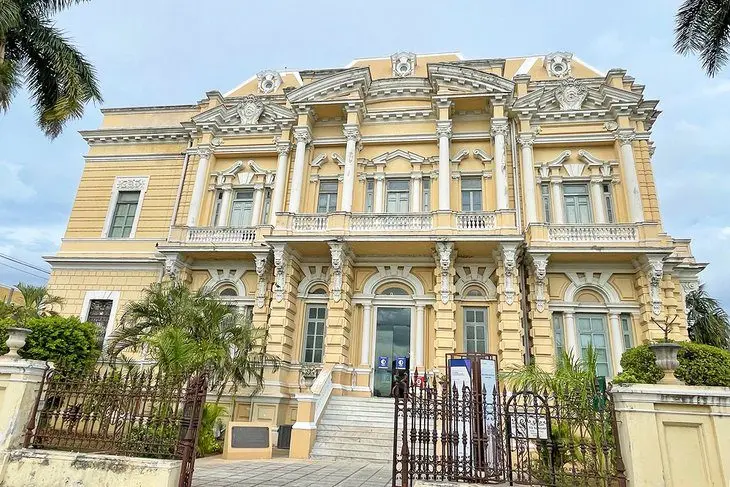
The city of Merida, the capital of the state of Yucatan, is certainly one of Mexico’s most beautiful and fascinating. It is one of the oldest colonial cities in the country and is beloved for its blend of modern and Mayan culture, its burgeoning restaurant scene, sleek hotels, and avenues of culture.
Speaking of cultural avenues, the most famous in the entire city is the Paseo de Montejo, named for Francisco de Montejo, the Spanish conqueror who founded the city in the 16th century. The broad, tree-lined street is home to the most majestic mansions in the city and it is considered to be the main artery for all of Merida.
Along the avenue you will be able to tour some of the many ornate homes, as well as stop into open-air markets, galleries, and shops. The city’s most famous restaurants are on the avenue, or just a short walk from it. It was designed to be similar to the famous boulevards in France, like the Champs-Elysees.
Read More: Top-Rated Tourist Attractions & Things to Do in Mérida
20. See the Cliff Divers in Acapulco
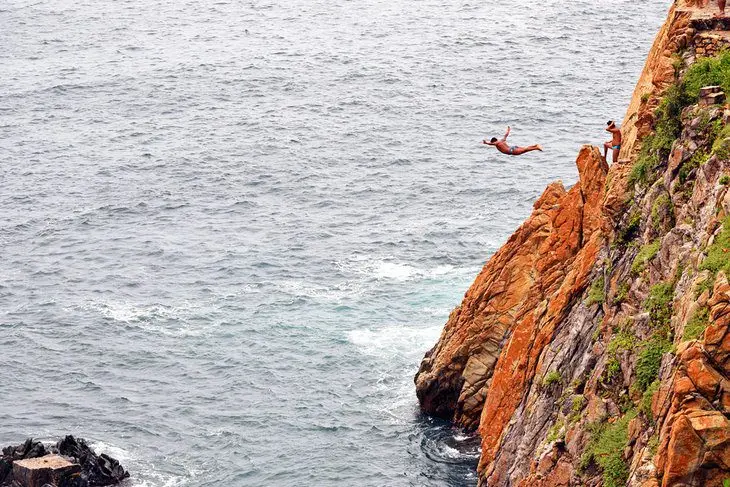
When we talk about the original beach getaways in Mexico, we are talking about Acapulco. Though the city has fallen out of the spotlight in recent years, at one time Acapulco was the most glamorous travel destination in Mexico, bringing celebrities, politicians, and the rich and famous to the golden shores of the Mexican Pacific.
While Acapulco still has much of that old-world glamour in certain parts of the city, much of the destination is still struggling to recover from a dramatic dip in tourism. But one thing about Acapulco that will never change is the professional cliff diving that is one of the top things to do in Acapulco.
The divers at La Quebrada are one of the most famous attractions in Acapulco. Professional divers climb the cliffs (as high as 80 feet) and assess the churning waters below before diving gracefully into the sea. It can be a deadly endeavor if you don’t time the dive just right. But it is breathtaking to watch.
21. Explore the Longest Malecon in Mexico

Mexico’s malecons (boardwalks) are beautiful no matter where you go. But the Malecón in Mazatlan happens to take the lead. Not only is it the longest Malecón in the world, it also happens to be the most beautiful.
Stretching for a lengthy 13 miles, the Malecón in Mazatlan runs through many neighborhoods, from the Centro Historico all the way around the main Bay along the Avenida Del Mar. The recently refurbished Malecón is today a center of activity for both locals and visitors. Wide lanes make it a popular spot for running or cycling.
Along the way, you’ll capture the elements of what makes Mazatlan unique. Catch a glimpse of the three famous islands out in the bay, or watch the Pulmonia taxis scoot by along the main drag. Sculptures dot the Malecón at every turn, as well. Like Acapulco, you may even have the opportunity to see cliff divers.
The Malecón is also where the Carnival parade takes place in Mazatlan every year.
22. Dive into Rio Secreto
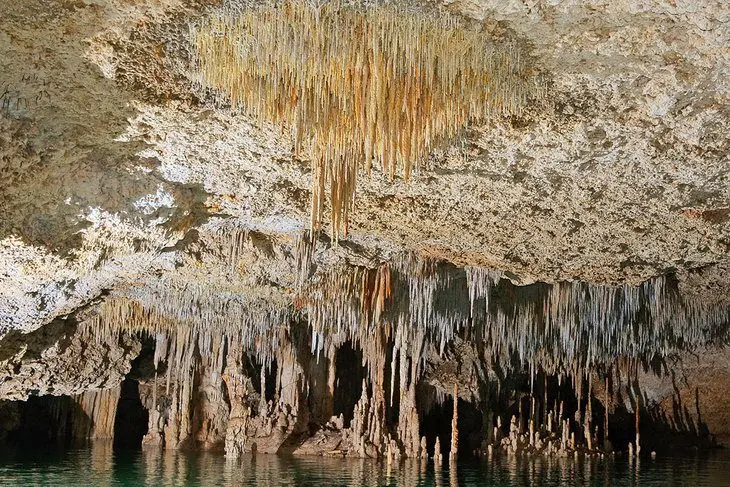
Cancun is a treasure trove of activities and things to do, but one of the best things to do in Cancun is also one of the best things to do in Mexico overall, and that is to visit Rio Secreto.
Rio Secreto is, in a word, spectacular. The all-day excursion takes travelers deep into the underground Mayan world to explore the vast system of underground caves, tunnels, and rivers that lie in the bedrock underneath the Yucatan peninsula.
Rio Secreto is a silent world deep underground. Guests don a wetsuit, helmet, headlamp, and special shoes to journey into the cave for a magical adventure. The route takes an hour and a half in the underwater cave, with plenty of swimming in the underground river, viewing the stalactites and stalagmites up close and personal, and floating in a pitch-black, silent cavern.
If you do one excursion in Cancun, Rio Secreto should be at the top of the list.
Address: Carretera Federal Libre Chetumal- Puerto Juárez Ejido Sur, 77712 Playa del Carmen, Q.R., Mexico
Official site: https://www.riosecreto.com/
23. Visit the “Other” Side of Los Cabos
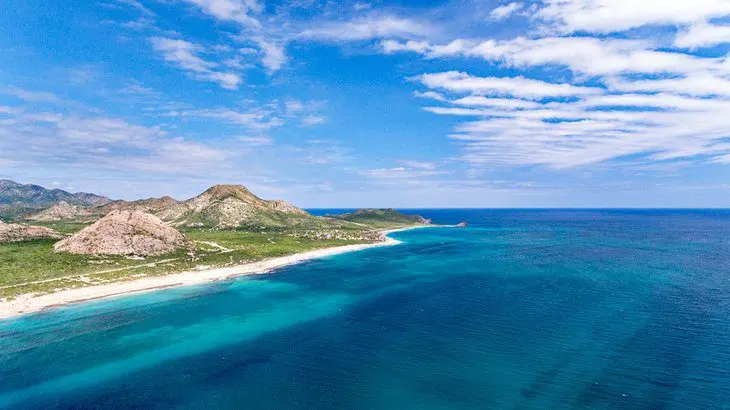
While everyone else is hitting the beaches, hotels, and attractions of Cabo San Lucas and San Jose del Cabo, make a beeline in the opposite direction and head to the still-quiet, still-pristine East Cape.
Baja California Sur’s East Cape is a rising destination in Mexico, with new luxury hotels in the works or already open, like a Ritz-Carlton Reserve and a Four Seasons. This quiet part of Los Cabos is also home to Cabo Pulmo National Park, one of the best places in Mexico for snorkeling and scuba diving.
The East Cape faces the Sea of Cortez, which means that the water is calm and clear enough for fantastic swimming, unlike Los Cabos’ water, which tends to be more rough and unpredictable.
The East Cape is also the gateway to visit the city of La Paz, the capital of Baja California Sur, and one of the most charming and beautiful seaside cities in Mexico.
24. Marvel at the Waterfalls of Tamul
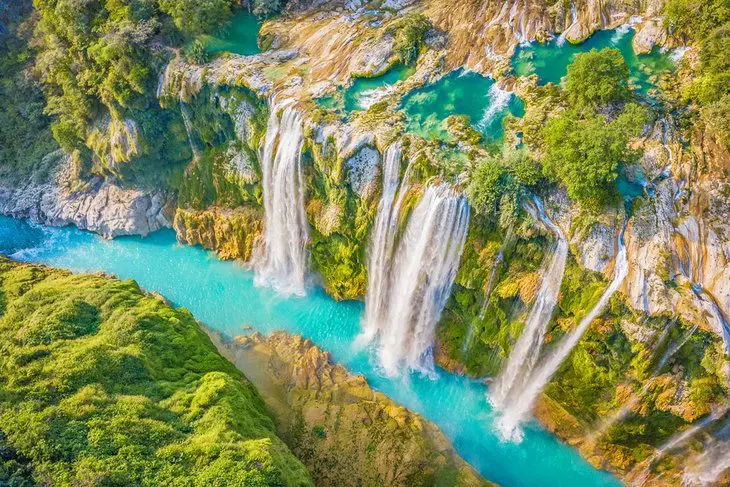
Mexico is home to some of the world’s most spectacular waterfalls. All across the country, you’ll be able to find beautiful waterfalls that tumble from towering cliffs and plunge into swirling pools below. But no waterfalls in Mexico are more beautiful than the Cascada de Tamul.
Located in the state of San Luis Potosi, the Cascada de Tamul is considered to be the crown jewel of Mexico’s waterfalls. The falls start 340 feet above the Tampaon River near Ciudad Valles and is born from the merging of the Gallinas River and the Santa Maria River. Nearly 1,000 feet across, this is one of the largest waterfalls in Mexico.
To view it, the best way is to hire a guide to take you out in a traditional boat to see the falls from below. You’ll want to visit anytime except July and August, when the rains make it much harder to visit the falls.
Be prepared to get wet – the water is everywhere and impossible to avoid. But you’ll be grateful for the cool rush of the water after trekking through the steamy jungle to get there.
25. Get Mystical in San Cristobal de las Casas
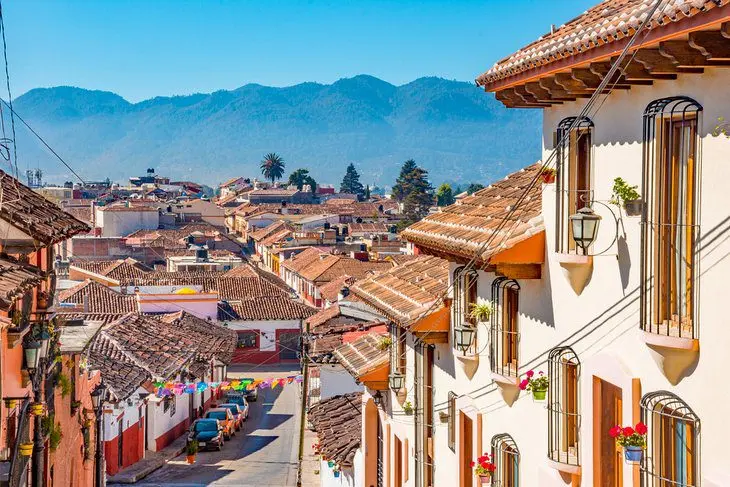
Tucked within the highlands of southern Mexico, in the lush, green state of Chiapas, is the city of San Cristobal de las Casas. This historic colonial city is shrouded in mystery and steeped in mysticism. The local Mayan tribe that has inhabited the land for centuries is heralded for its knowledge of shamanism, and backpackers come from all over to get in touch with their spiritual sides.
But ancient traditions and beliefs aside, San Cristóbal de las Casas is one of the most beautiful colonial cities in Mexico. The air is fresh here, thanks to the altitude, and offers more of an Andean experience in temperature and vibe.
Walk the cobblestone streets to discover cafés, restaurants, galleries, and shops. Try the local coffee and, even better, the chocolate. Be sure to stop by the main square to see the canary-colored cathedral that dominates the plaza.










